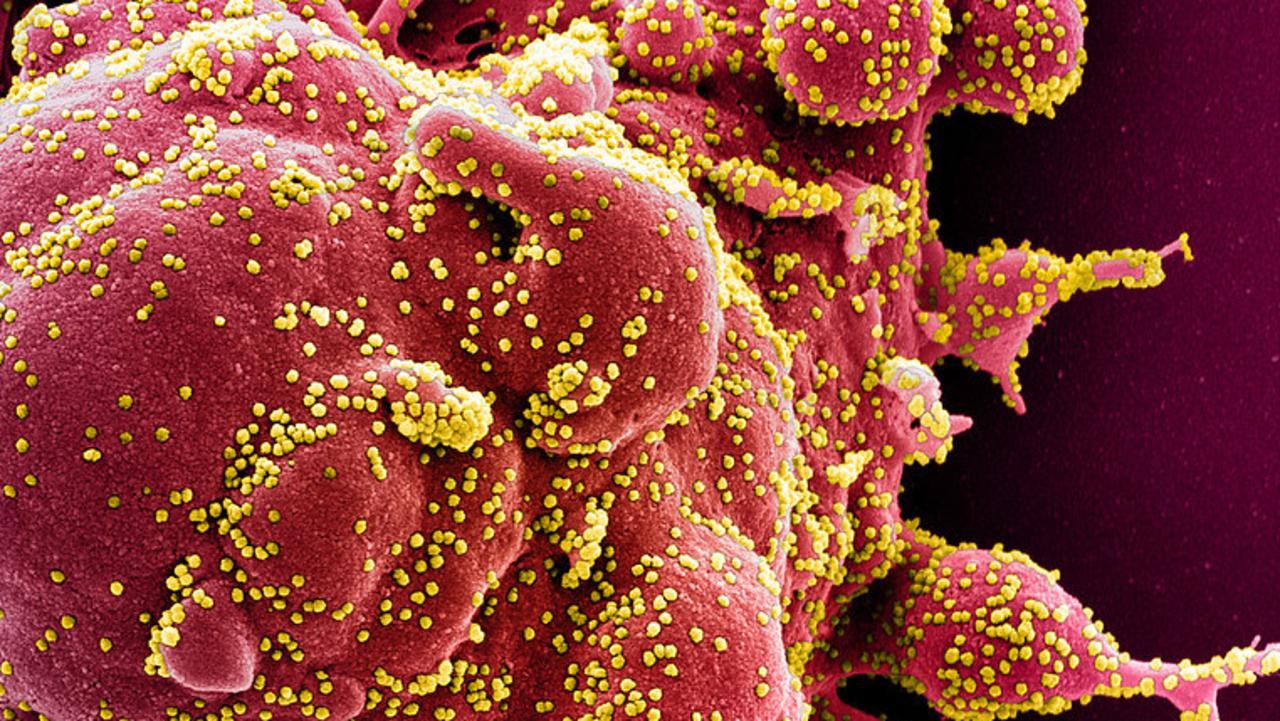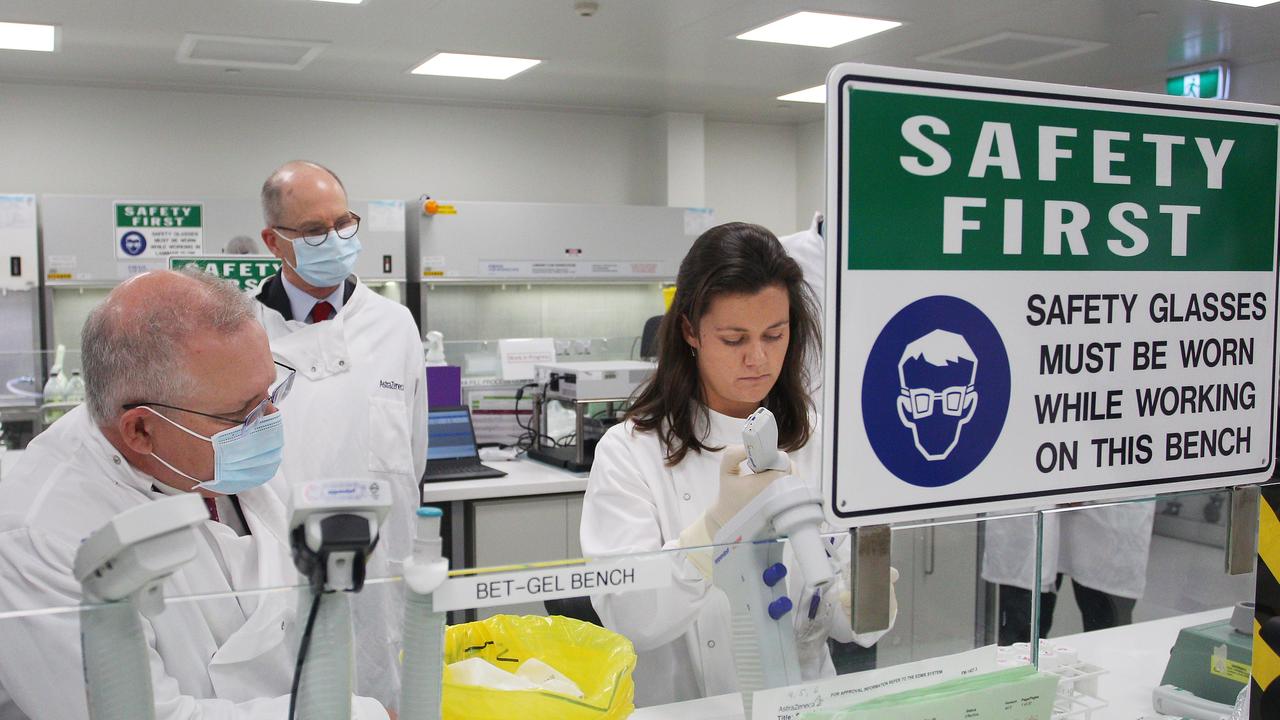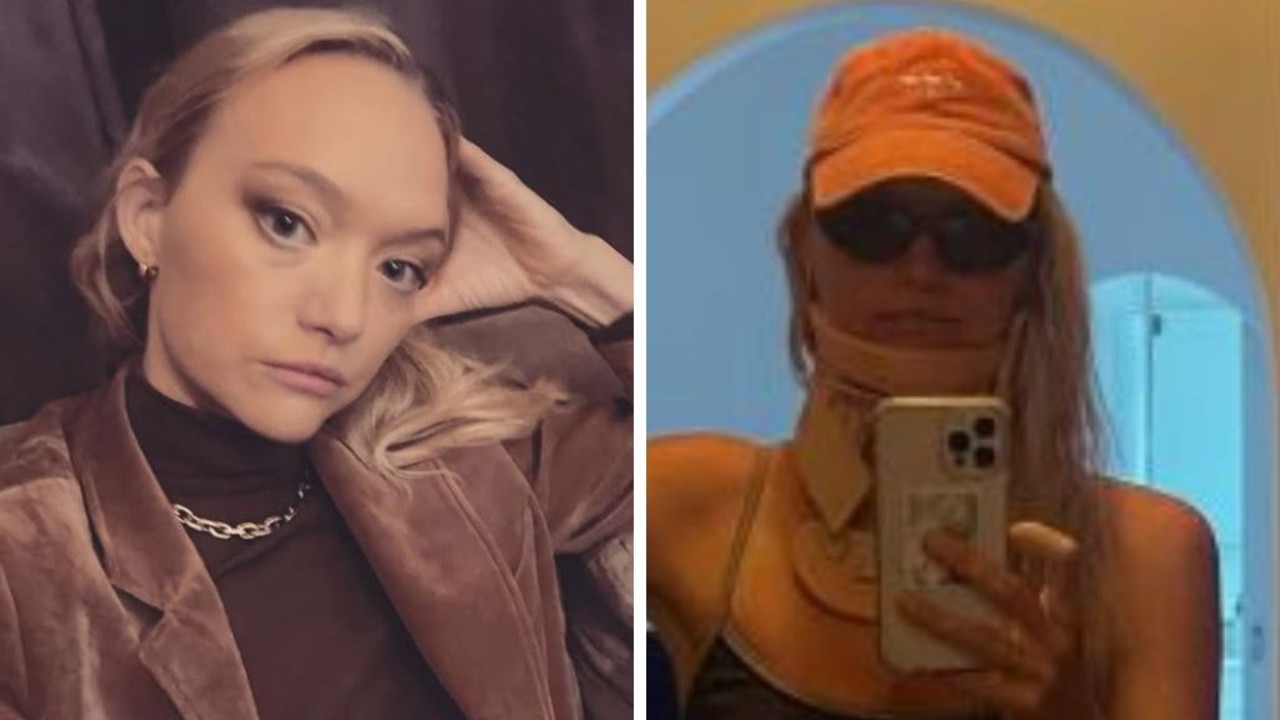How hopeful should Australians be about Scott Morrison’s coronavirus vaccine deal?
The PM’s announcement about a free vaccine has provided hope but there are many challenges to overcome before Aussies can line up.

Prime Minister Scott Morrison has provided hope for many that life will begin returning to normal next year after he revealed a deal to provide every Australian with a free coronavirus vaccine.
On Wednesday, news.com.au revealed the government had made an agreement that would see Australians be among the first in the world to receive the University of Oxford vaccine if trials prove successful.
“The Oxford vaccine is one of the most advanced and promising in world, and under this deal we have secured early access for every Australian,” Scott Morrison said in a statement.
He said Australia had signed a “Letter of Intent” with pharmaceutical giant AstraZeneca to supply the vaccine candidate to Australia. A contract has also been signed with Becton Dickinson for the supply of needles and syringes.
“Today is a day of hope, and Australia needs hope, the world needs hope, when it comes to this coronavirus,” Mr Morrison told reporters on Wednesday.
He said the vaccine could be made available as early as next year.
“If it can be done sooner than that, great,” he said.
But there are still many challenges to overcome before Australians will be able to line up for their free jab.
Mr Morrison has acknowledged it was still unclear whether the vaccine would work.
“There is no guarantee that this, or any other, vaccine will be successful, which is why we are continuing our discussions with many parties around the world while backing our own researchers at the same time to find a vaccine,” he said.
There are also questions around pricing and who will be able to manufacture Australia’s supply.
While the Letter of Intent commits to production of the vaccine in Australia, no final formal agreement has been reached with details about the distribution, timing and price of the vaccine.
So just how hopeful should Australians be?
VACCINE IS IN PHASE III TRIALS
The Oxford vaccine candidate called ChAdOx1, is being developed by a team of scientists at Oxford Vaccine Group (Department of Paediatrics) and Oxford University’s Jenner Institute in the United Kingdom.
The group developed the vaccine by taking a spike protein from SARS-CoV-2 and injecting this into an adenovirus that causes the common cold.
It’s hoped that the spike protein will trigger an immune response when injected in humans and that the body will quickly recognise the pathogen if exposed again and respond.
The vaccine has already been tested in rhesus macaque monkeys and mice, and was found to be safe as well as producing an immune response.
The most recent Phase I/II trial saw 543 healthy adults aged 18-55 given a single dose of the vaccine. Another 534 people were given a different vaccine with similar minor reactions to act as a control group.
In results published in The Lancet, the study found the vaccine was safe, producing only mild reactions — most commonly fatigue and headache — and also induced a strong antibody response in all vaccinated volunteers.
This includes a T cell response (white blood cells that attack cells infected with the virus) and an antibody response (antibodies neutralise the virus so that it cannot infect cells).
“The preliminary data from the trial clearly demonstrates that the vaccine induces an antibody response within 28 days,” Jenner Institute senior project manager Rebecca Ashfield wrote in The Conversation.
RELATED: Follow our live coronavirus updates
RELATED: Truth about Morrison’s ‘no jab, no pay’ policy

“This response is in a similar range to that in individuals who have recovered from COVID-19, providing encouragement that the vaccine will be able to protect the majority of people against infection.”
Another 10 volunteers who were given a second “booster” shot of the vaccine did even better.
“We saw the strongest immune response in the 10 participants who received two doses of the vaccine, indicating that this might be a good strategy for vaccination,” Oxford Vaccine Trial chief investigator Professor Andrew Pollard said.
The vaccine is now moving to Phase III testing, which will look at whether it’s effective at protecting against the coronavirus.
For this part of the trial, up to 50,000 people will be given the vaccine including 30,000 in the US and 10,000 in the UK. Thousands in Brazil and South Africa have already been given the vaccine.
While the results look promising so far, Grattan Institute’s Stephen Duckett, a former secretary of the federal health department, told news.com.au, there were still many unknowns.
“There’s a long way yet to know whether this works or not,” he said.
He said it was unclear whether the vaccine’s protection lasted longer than 56 days and the Oxford study only looked at people aged between 18 and 55 years old.
“The most at risk are those over 55, including those over 75, and we’ve got no information about that,” he said.
He said researchers should be able to recruit people quite quickly for the trial but “you don’t vaccinate 50,000 people overnight”.
However, he said results could be known faster if there was a clear result, for example if there were no infections among the people vaccinated, versus the control group.
The vaccine would also have to gain regulatory approval from the Australian Government.
WHO WILL MANUFACTURE THE VACCINE FOR AUSTRALIA?
If the vaccine is proved to be effective and safe, the next problem will be who manufactures it.
The Prime Minister said in his statement that if the vaccine was successful Australia would manufacture and supply vaccines straight away “under our own steam”.
The Letter of Intent that Australia has signed with pharmaceutical giant AstraZeneca, which is working with Oxford University on the large-scale manufacture of the vaccine, commits to the production of the vaccine in Australia, subject to safety and effectiveness.
However, the Australian outpost of AstraZeneca doesn’t manufacture vaccines and so the government is looking to companies like CSL, which produces the flu vaccine, to actually produce it.
Unfortunately in a statement on its website the biotechnology company said it had “a number of technical issues to work through and discussions are ongoing”.
It also noted that the development of a separate University of Queensland vaccine candidate remained CSL’s priority.
“We are currently in discussions with AstraZeneca and the Australian Government to assess whether it is possible to provide local manufacturing support for the Oxford University/AstraZeneca vaccine, should it prove successful, while protecting our commitment to the UQ vaccine,” the statement said.
“We are assessing the viability of options ranging from the fill and finish of bulk product imported to Australia through to manufacture of the vaccine candidate under licence.”
Industry Minister Karen Andrews told ABC’s Fran Kelly that CSL was currently the leading producer and was well placed to be able to manufacture the vaccine. But she acknowledged more work needed to be done.
Asked what would happen if CSL couldn’t manufacture the vaccine, Ms Andrews said: “They’re all very good questions and they’re the ones I’m asking myself now to make sure we are as prepared as we possibly can”.
“While CSL is best placed at the moment, we are certainly reaching as broadly as we can to other potential manufacturers here in Australia,” she said.
Last week Ms Andrews released a call-out for information from other local manufacturers which may have the ability to pivot, or could scale up their operations with support, to help produce a vaccine or other coronavirus treatments.
“The issue is the scale-up, which is what we’re working on at the moment,” Ms Andrews said.
RELATED: Doctor slams anti-vaxxers over coronavirus vaccine

“There is capacity to potentially produce in Australia but at lower volumes, much lower volume than what we would need, so my focus is now on how we would scale-up that production but that work is well underway.”
Ms Andrews said she was working with the CSIRO to look at what the production capacity is in Australia and to make sure the manufacturing facilities were ready to go once a successful vaccine is identified.
“Depending on the vaccine that is ultimately the candidate that we proceed with, then there will be differences in the way that the vaccine is produced and what the requirements are but we are trying to cover all bases at the moment.”
Australia’s acting chief medical officer Professor Paul Kelly noted on Wednesday that among the more than 160 vaccine candidates in development, there were currently four “very hopeful” methods that used completely different ways of creating an immune response.
“The adenovirus vaccines, also the RNA and the DNA vaccines, they are first-in-human vaccines,” he said.
“So this is really sort of groundbreaking stuff that we’re involved in here. Some of the other vaccine candidates are much more traditional in their processes.”
AstraZeneca Australia president Liz Chatwin also emphasised the difficulty of manufacturing.
“This is an adenovirus vector vaccine so it has never been produced in Australia,” Ms Chatwin told reporters on Wednesday.
“We’re talking to a selected Australian manufacturing partner on the feasibility and technical details of that right now, we have a technical team globally that are talking through the process steps.
“This is a massive scale-up activity, we haven’t done it before, we’re entering into a number of parallel supply agreements around the world with vaccine manufacturers and we’re doing this at no profit during the pandemic.
“As you can imagine this is a huge effort from us as a global company.”
However, Mr Morrison told reporters on Wednesday the manufacturing agreements were “well advanced” and said “I feel very positive about those”.
HOW MUCH WILL IT COST?
Australians will get the vaccine for free but it’s unclear how much the government will have to pay for it as a full contract with AstraZeneca has not been finalised. Negotiations are ongoing about the price, distribution and timing.
When asked whether there was a risk Australia could pay more because it had come out publicly about the deal before it had been finalised, the Prime Minister said: “these are good faith discussions and I’m not concerned about that”.
He said statements from AstraZeneca themselves had suggested they were not looking to profiteer.
“History will judge those who find the cure,” he said.
Mr Morrison has also indicated the government was open to providing a yearly top-up for free if required.
“We’ll do what needs to be done,” he said. “The cost of this is frankly not my primary consideration, it’s the cost of it not being present now that is devastating our economy and jobs across the country.
“So I think what Australians rightly would expect is that we just do what is necessary to get this done, and to get it available.”
GETTING PEOPLE VACCINATED
The Prime Minister has noted about 95 per cent of Australia’s population will need to be vaccinated to make it effective and this may not be an easy task.
“I’m advised that we will need about a 95 per cent vaccination rate across the country,” he told reporters.
“Now that is the normal target range for when you’re having a vaccination program and we’ll be seeking to ensure that that is widely implemented with our partners around the country.”
Mr Morrison initially said he expected the vaccine would be made “as mandatory as you can possibly make it” and pointed to his record on the “no jab, no pay” program that denies parents certain government benefits if they don’t get their children vaccinated. However, he later backtracked on this and said it would not be made compulsory.
The idea that the vaccine could be mandatory was greeted with anger among some.
But the high level of vaccination is necessary as it protects those who can’t get vaccinated because of health problems.
“What is important to understand with any of these vaccines is it does protect you … but it also protects the community and, as is the case with any vaccine, there will be some individuals who, for precise medical reasons, can have issues with any vaccine,” Mr Morrison said.
“They and their safety and their health depends on the vaccine’s take-up more broadly in the community. That’s how they get protected.
“And this is an important part of our vaccine strategy, not just on Covid-19, but more broadly. We’ll seek its most widespread application, as we do with all important vaccines.”




